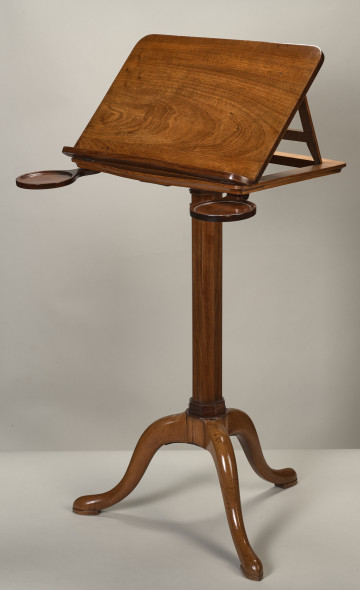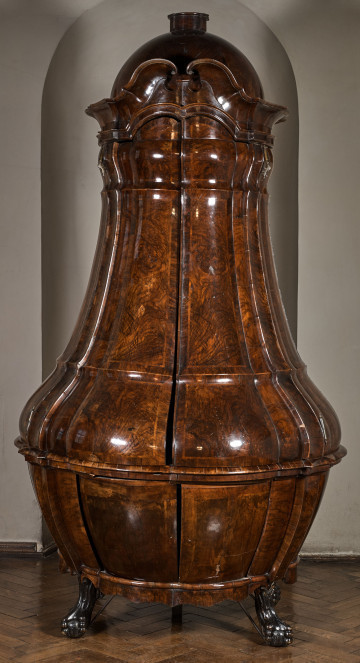
Wooden desktop
18th-19th century
Castle Museum in Łańcut
Part of the collection: Meble i wyposażenie wnętrz
Pedestal, guéridon. In European furniture manufacturing, a guéridon was a tall decorative pedestal or stand used for placing candlesticks, vases, trays or baskets of fruit, plants, or other decorative objects. Guéridons became widespread in the 17th c. The term 'guéridon' entered furniture manufacturing from the world of theatre and music, when the Italian 'Commedia dell'arte', developing since the middle of the 16th c., had a significant impact on the development of the French theatre in the 17th c. A black page named Guéridon became one of the characters in comedy plays. His prototype was a black servant, who, with great grace and skill, carried heavy trays of dishes on his head during court celebrations. The carved figure of a black man holding a torch or supporting a candelabra tabletop on his head seeped from comedy plays into interior decoration. Although over time, in the Baroque and Rococo periods, the black servant was replaced with childlike putti, sirens, or supports of other shapes, they were still referred to as guéridons. The fashion for them spread to such an extent that, starting in the 18th/19th c., nearly every small table with a modest top surface on one leg or on a tripod became a guéridon. Along with the dominance of French influences during the reign of Napoleon III Bonaparte (1808-1873) in the years 1848-1870, when furniture manufacturing imitated the Renaissance and the time of Louis XV and XVI with the addition of oriental elements, small tables evoking the old form of the guéridon once again appeared in interior furnishing. The presented exhibit is one such table. On it, the sculpted figure of a black girl is standing on a tripod, carrying the top of a gilded, painted decorative table-pedestal on her turban-wrapped head. Teresa Bagińska-Żurawska https://orcid.org/0000-0002-9243-3967
Author / creator
Dimensions
height: 89 cm, width: 36 cm
Object type
Furniture and interior fittings
Technique
carpentry
Material
wood
Creation time / dating
Creation / finding place
Owner
Castle Museum in Łańcut
Identification number
Location / status

18th-19th century
Castle Museum in Łańcut

20th century
Castle Museum in Łańcut

18th century
Castle Museum in Łańcut
DISCOVER this TOPIC
Castle Museum in Łańcut
DISCOVER this PATH
Educational path